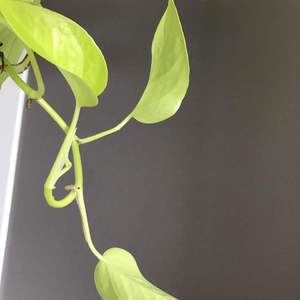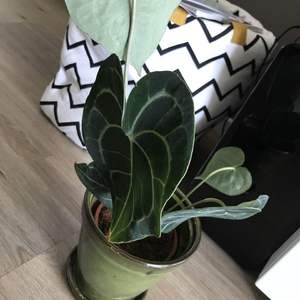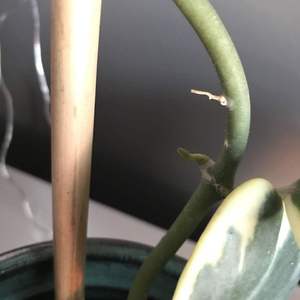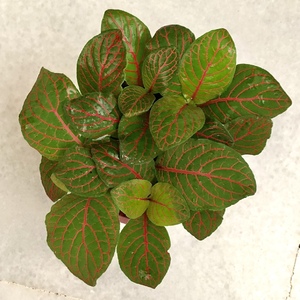求助
Pommy Mommy
2018年07月02日

I found this growing wild at my new house what is this?
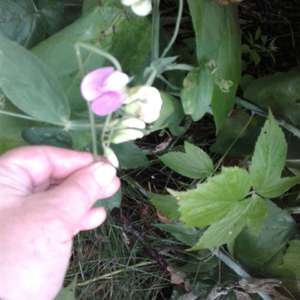

1
0
Pommy Mommy:I think you are absolutely right, I was able to dig some of the stem out from under some black raspberry bushes and the roots must be ancient because they the stem/vine is HUGE! I've never seen sweet peas this large I always start them from seed every year so I don't even have flowers on mine yet. I'm renovating my dream home, which is 114 years old so there's at least a century of flowers planted around the yard that's been overgrown! thank you for your input. Have a blessed day
WHdeckgardener:maybe a sweet pea? smell sweet?
亚瑟塞尔:maybe it is kidney bean.
成长记
kensong
2018年07月02日

Spotted mold and dead roots on my Phal so repotted with fresh bark and sphagmum moss after cutting off dead roots. Hopefully it does well as it has been repotted too often. The leaves look great though including the new ones.


1
0
文章
Miss Chen
2018年07月01日

With container gardens, you can have fresh vegetables all year even when garden space is not available. Zucchini is a summer squash that grows best in full sun and warm conditions. As container culture gains popularity, many new dwarf or small growing varieties of vegetables are being developed; compact zucchini varieties are no exception, and include the culitvars Black Magic, Hybrid Jackpot, Gold Rush and Classic. Grow zucchini indoors all year round. In winter, place the pots in a south facing window where they will get the most sun.

Step 1
Fill 2-inch pots with soil-less seed starting mix. Use a pre-mixed formula available at garden centers or make your own by mixing equal parts vermiculite and peat moss. Dampen the mixture and fill the 2-inch pots.
Step 2
Place one zucchini seed in each pot and cover it with 1/2 inch of soil. Place the pots in dappled or filtered sun with a temperature range between 65 and 75 degrees Fahrenheit. Keep the soil around the seedlings damp with frequent light applications of water. The seedlings will germinate in five to seven days and be ready to transplant into a large, permanent container in three to four weeks.
Step 3
Fill one 5-gallon container for each zucchini plant. Use a well-draining soil-less potting mix and fill the pot to 1-inch below the lip of the container. Garden centers sell pre-formulated mixes for indoor vegetable container growing. Alternately, mix your own by combining equal parts loam, peat and coarse clean sand. Add a 14-14-14 liquid fertilizer to the mix. Check the back of the package to determine the correct amount.
Step 4
Dampen the potting mix with water until it is light and crumbly. Scoop out a shallow hole in the center of the pot large enough to accommodate the root ball of one zucchini plant. Select the strongest of the zucchini seedlings for planting.

Step 5
Slide the seedling out of the small pot and place it into the large container with the base of the stem planted at the same depth in the soil as it was in the seeding pot. Fill in around the roots and pat down the soil to secure the seedling in the pot. Place the potted zucchini in a sunny window where it will get at least five to six hours of sun each day.
Step 6
Fertilize once a week using a fertilizer formulated for complete nutrition. There are many combinations on the market for vegetable growing. A good, basic fertilizer formula like a 5-10-10 or a 10-10-10 fertilizer is suitable. Check the package for the correct application amount and method.
Step 7
Water when the top of the soil feels dry to the touch, usually daily or every other day for container grown zucchini plants. Soak the soil thoroughly at each watering. Place the pot on a saucer or tray to catch water and protect surfaces. Empty the saucer after every watering to prevent water from sitting around the root system.
Step 8
Harvest the zucchini plants as when they are 3 to 4 inches long and still tender. Harvest continuously as the fruits ripen to encourage the plant to keep producing. Zucchini are ready to harvest 50 to 70 days after planting.

Step 1
Fill 2-inch pots with soil-less seed starting mix. Use a pre-mixed formula available at garden centers or make your own by mixing equal parts vermiculite and peat moss. Dampen the mixture and fill the 2-inch pots.
Step 2
Place one zucchini seed in each pot and cover it with 1/2 inch of soil. Place the pots in dappled or filtered sun with a temperature range between 65 and 75 degrees Fahrenheit. Keep the soil around the seedlings damp with frequent light applications of water. The seedlings will germinate in five to seven days and be ready to transplant into a large, permanent container in three to four weeks.
Step 3
Fill one 5-gallon container for each zucchini plant. Use a well-draining soil-less potting mix and fill the pot to 1-inch below the lip of the container. Garden centers sell pre-formulated mixes for indoor vegetable container growing. Alternately, mix your own by combining equal parts loam, peat and coarse clean sand. Add a 14-14-14 liquid fertilizer to the mix. Check the back of the package to determine the correct amount.
Step 4
Dampen the potting mix with water until it is light and crumbly. Scoop out a shallow hole in the center of the pot large enough to accommodate the root ball of one zucchini plant. Select the strongest of the zucchini seedlings for planting.

Step 5
Slide the seedling out of the small pot and place it into the large container with the base of the stem planted at the same depth in the soil as it was in the seeding pot. Fill in around the roots and pat down the soil to secure the seedling in the pot. Place the potted zucchini in a sunny window where it will get at least five to six hours of sun each day.
Step 6
Fertilize once a week using a fertilizer formulated for complete nutrition. There are many combinations on the market for vegetable growing. A good, basic fertilizer formula like a 5-10-10 or a 10-10-10 fertilizer is suitable. Check the package for the correct application amount and method.
Step 7
Water when the top of the soil feels dry to the touch, usually daily or every other day for container grown zucchini plants. Soak the soil thoroughly at each watering. Place the pot on a saucer or tray to catch water and protect surfaces. Empty the saucer after every watering to prevent water from sitting around the root system.
Step 8
Harvest the zucchini plants as when they are 3 to 4 inches long and still tender. Harvest continuously as the fruits ripen to encourage the plant to keep producing. Zucchini are ready to harvest 50 to 70 days after planting.
0
0
求助
💫sammie💫
2018年06月30日

Why are my golden sedum's leaves wrinkling like this? i water it every 5 days and take it outside to get sun for most of the day, i live in zone 8. am i overwatering, underwatering, or am i giving it too much sun? i'm still relatively new when it comes to plant care, and id appreciate help from anyone.

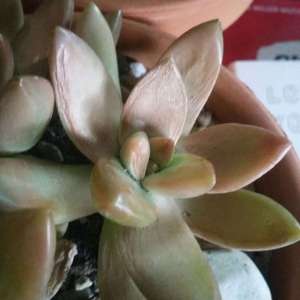


0
0
shirly mei:To me they look like you have been overwatering them. Make sure that you use cactus soil and only water them when the soil is completely dry. I leave my golden sedum all day outside too and I water them maybe every 2 weeks
Fion:Maybe the roots aren't growing.
meriunkat:succulents only need 6 hours of sunlight
WHdeckgardener:hi, hard to say...I have had success using good draining soil...cactus if possible. they like sun..or indirect sun. once established I only watered when the pot felt light. then good drink.



